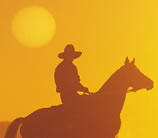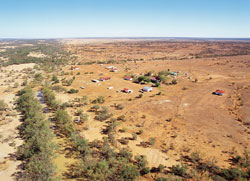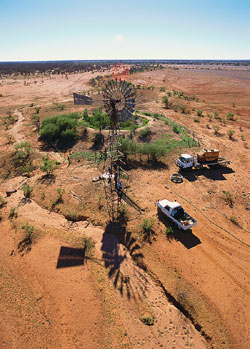



 Those wily Colonial boys
Those wily Colonial boysAround the meal tables, machinery sheds and stock camps of the nation's cattle stations, all the talk is of the imminent sale of AMP's Stanbroke cattle empire. Its 27 stations are on the market, and one of the likely bidders for at least part of the group is the little-known, but fast-expanding, Colonial Agricultural Company.
Story Sue Neales
Photos John Elliott
 Peter Edmonds finally has a grin on his sun-darkened face. After 18 months
of desperate drought, the channels and creeks of Keeroongooloo Station in
far western Queensland are full of water again. The Channel Country grass
is lush and green; Cooper Creek is brimming with water, fish and birds; and
the station's 15,000 Brahman-cross steers and bullocks are sleekly white,
fat and rounded.
Peter Edmonds finally has a grin on his sun-darkened face. After 18 months
of desperate drought, the channels and creeks of Keeroongooloo Station in
far western Queensland are full of water again. The Channel Country grass
is lush and green; Cooper Creek is brimming with water, fish and birds; and
the station's 15,000 Brahman-cross steers and bullocks are sleekly white,
fat and rounded.
No more mustering stock in 57 degrees Celsius heat as Edmonds, his partner Joanne Clanfield and their five young ringers endured in January when their most reliable bullock paddock fringing Cooper Creek ran out of water; no more longing for rain to water the parched red gibber ridges and fill dams and homestead tanks after receiving less than three inches of rain in 2002; and no more having to make phone calls to Colonial Agricultural Company's head office, trying to keep the quiet desperation and despair out of his voice.
"We were doing it pretty hard here for a while," says Peter, the 40-year-old manager of 1.4-million acre Keeroongooloo, near Windorah. "Then, just when it was getting really desperate, it rained. We had two inches in the second week of February, almost as in all of 2002. I just stood in it for what seemed like hours, and all my young fellows too. We knew then we'd come through our worst drought on record."Full story Issue 29 June/July 2003
Subscribe now and receive each bi-monthly issue for only $45 mailed to any address in Australia. Overseas rates at Subscription Centre. OUTBACK has been Australia's fastest-growing magazine for the past two years in a row.
Visit rmwilliams.com.au for R.M.Willams history, news and the on-line product catalogue